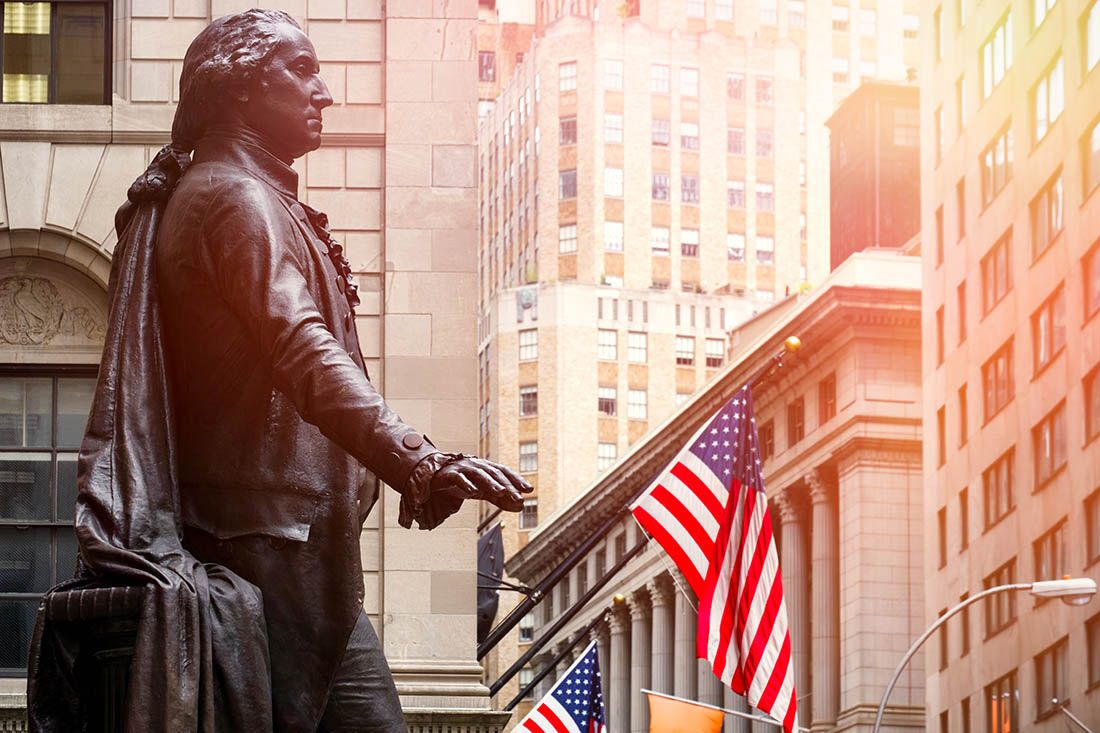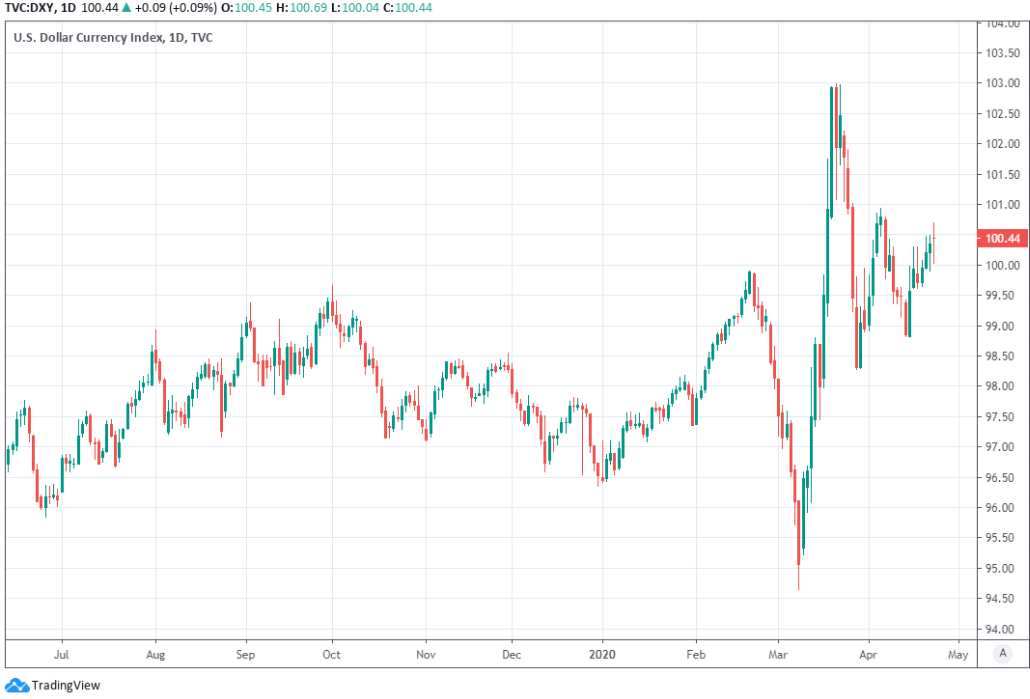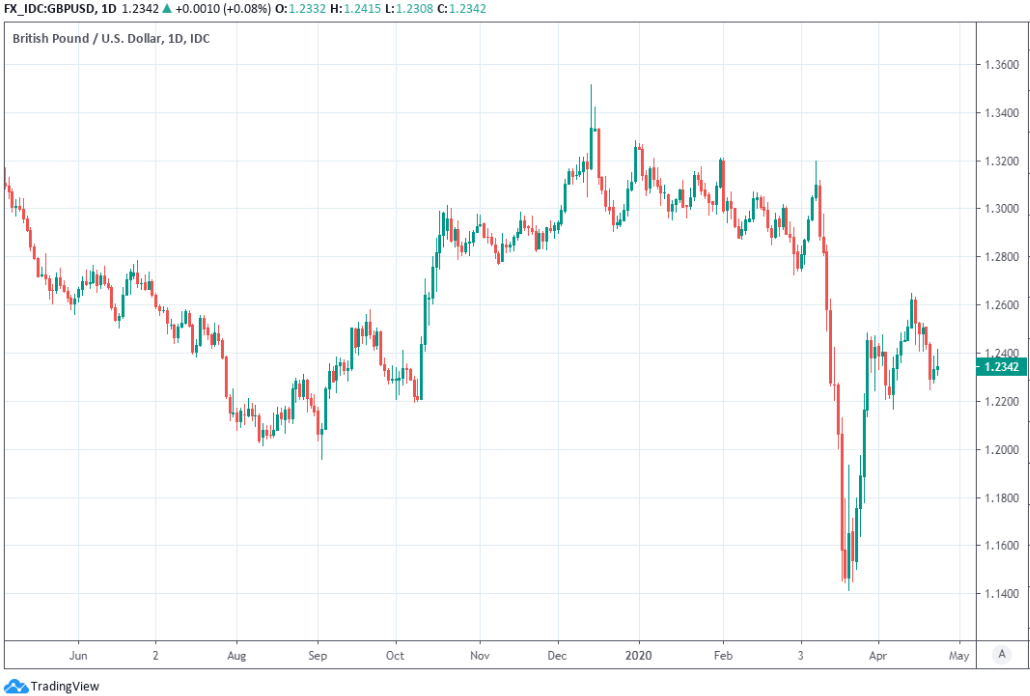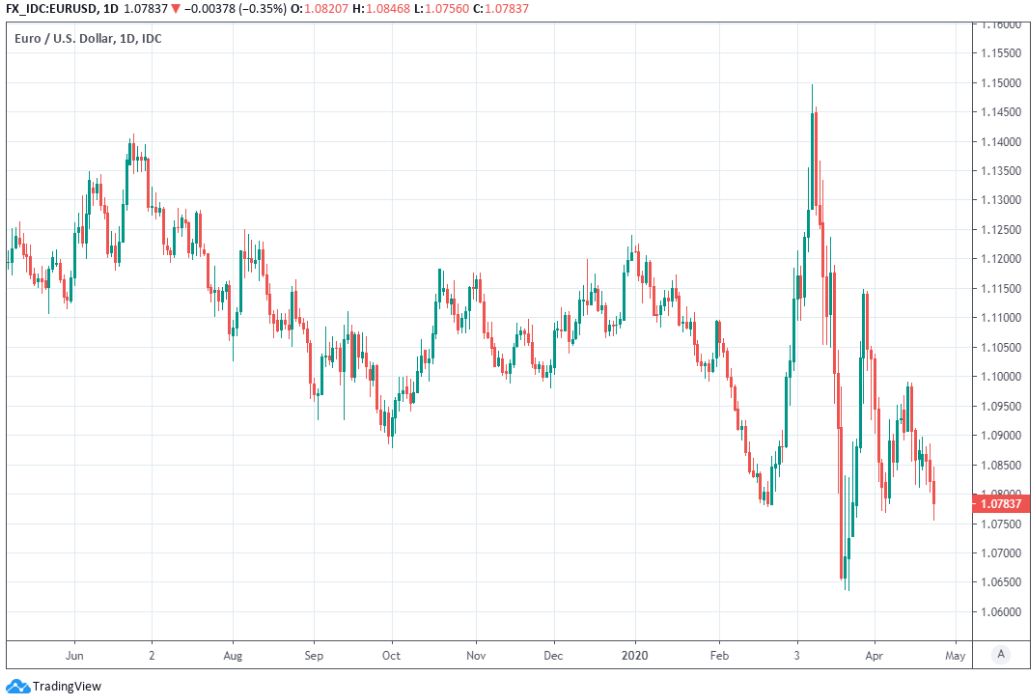Dollar Resurgence Lurks On Road Ahead as Stock Market Rally Seen On Borrowed Time
- Written by: James Skinner
-

Image © Adobe Images
- GBP/USD spot at time of writing: 1.2316
- Bank transfer rates (indicative): 1.2007-1.2094
- FX specialist rates (indicative): 1.2154-1.2228 >> More information
The Dollar cooled its heels on Thursday following a hat-trick of gains and as investors chased stock markets, commodities and riskier currencies higher but that rally is on borrowed time already, according to strategists at BofA Global Research, and could give way to a resurgent greenback before long.
America's Dollar ceded ground to most major rivals Thursday as investors responded to a bounce in oil prices that quickly broadened into a rally in other risks assets like stocks. The Dollar has been the only real winner each time risk markets take a turn for the worse of late and it's fallen against at least half its major rivals when the mood among investors brightens.
Thursday's bounce in oil resulted from tensions between the U.S. and Iran, which are not normally conducive to rising stocks or a weaker Dollar, although price action followed a hat-trick of declines for those riskier assets and came amid elevated hopes of an end to the global coronavirus 'lockdown.' The number of new coronavirus cases declared globally continued a staggered decline from April 12 on Thursday, according to Johns Hopkins University data.
"The DXY has fallen into a range following its pullback from late March highs. High beta FX has retraced strongly on the global risk asset rally produced by official sector policy response and perceived flattening of COVID-19 curves," says Athanasios Vamvakidis, head of FX strategy at BofA Global Research. "As the risk rally fades and markets focus on the massive economic fallout of COVID-19, we expect the dollar to resume appreciating."

Above: Dollar Index shown at daily intervals.
Vamvakidis and the BofA team say that stock markets might have gotten ahead of themselves in recent weeks because government plans to reopen economies are "too gradual" and the "end-game is far from normalization to the previous regime." This could mean investors are blighted by fresh economic and financial shocks before long and that the safe-haven Dollar begins climbing again.
The global economy faces a historic contraction as large parts of it remain at a standstill due to national shutdowns aimed at containing the coronavirus, but investors won't know how large the declines will be for individual economies for a while yet. Official measures of output will not be available for the first quarter until well into May and it'll be August before second quarter numbers are out.
This alone is a risk to investors betting on a swift exit from 'lockdown' and quick recovery for economies, but one that's augmented by the uneven burden the virus has placed on countries and equally varied policy responses.

Above: Pound-to-Dollar rate shown at daily intervals.
"As most Eurozone economies remain in various forms of lockdown to contain COVID-19, the economy is collapsing. We expect real GDP in the Eurozone to drop by 7.6% this year, with risks to the downside, compared with a drop of 6% in the US. Macro policy support, although necessary, cannot change the dynamics of an economy that has shutdown. In any case, the fiscal stimulus policies in the Eurozone have not been as strong as in the US: 2% of GDP vs. 9% of GDP, respectively," Vamvakidis says.
Europe was the epicentre of the coronavirus pandemic before the U.S. leapt to the top of the table and it has spent the longest under 'lockdown' too, which could mean the damage will be worse on the old continent. And before the coronavirus, Europe was already host to some of the developed world's most fragile economies, which could be said to necessitate an even greater policy response than those delivered in more robust economies like the U.S.
That greater policy response had on Thursday, not been forthcoming, although IHS Markit surveys had painted a truly dire picture of conditions in Europe's services sector for April. Meanwhile, the U.S. government has already spent nearly 10% of GDP on support for companies and households but has continued to offer even more support to some of those who need it, which might see the U.S. economy outperforming others in any eventual recovery.

Above: Euro-to-Dollar rate shown at daily intervals.
Vamvakidis says this kind of mismatch and its consequences will be important influences on exchange rates going forward as well as a key source of demand for the Dollar. Structural weaknesses in the Eurozone, like already high debt levels and a one-size-fits-all monetary policy under the European Central Bank (ECB), could magnify the downside for Euro economies.
A falling single currency is a free lunch for the Dollar because EUR/USD accounts for more than half of the Dollar Index but it's not only the Euro that's expected to weaken. Sterling and the currencies of commodity producing countries like Canada, Australia and Norway are also tipped to decline, with Dollar strength only beginning to wain in the second half of the year.
"We expect EURUSD to weaken to 1.02 in 2Q and 3Q, recovering gradually to 1.05 by end-2020. However, we do not quite look for sharper moves in our outlook for the majors in G4, including our year-end forecast for GBP-USD at 1.21 and USD-JPY at 103," Vamvakidis says. "As long as the lockdown continues, new blind spots may appear, with potentially non-linear effects. Rolling lockdowns could make the economy even more vulnerable. On the positive side, we would expect early progress on a cure/vaccine to be very positive for risk and for the EUR."










